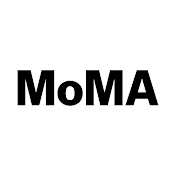Image Unavailable
This image is presented as a "thumbnail" because it is protected by copyright. The museum respects the rights of artists who retain the copyright to their work.
Hell Hole
1917
John Sloan
John Sloan (American, 1871–1951)
Prints
Hell Hole, 1917. John Sloan (American, 1871–1951). Etching and aquatint; platemark: 20.1 x 24.9 cm (7 15/16 x 9 13/16 in.); sheet: 27.5 x 33.7 cm (10 13/16 x 13 1/4 in.). The Cleveland Museum of Art, Gift of Ralph King 1926.123 © Delaware Art Museum / Artists Rights Society (ARS), New York The Golden Swan bar, nicknamed the Hell Hole, was a gathering place for the Ashcan artists, writers, and intellectuals in Manhattan’s Greenwich Village. John Sloan’s etching shows the back room of the establishment, which allowed female patrons and was patrolled by the bouncers known as Lefty Louis and John Bull, seen at the doorway. The cheerful clientele enjoy alcohol, intimate conversation, and heavy flirtation. Sloan depicted the playwright Eugene O’Neill at the upper right, whose plays include characters on the fringes of society. Sloan’s use of aquatint, a printmaking technique that creates tone in the image, adds to the smoky atmosphere of the late-night scene. The Golden Swan, or Hell Hole bar, depicted here, was the inspiration for the saloon in the Eugene O’Neill’s play The Iceman Cometh,written in 1939.
- Maker/Artist
- Sloan, John
- Classification
- Formatted Medium
- etching and aquatint
- Dimensions
- Platemark: 20.1 x 24.9 cm (7 15/16 x 9 13/16 in.); Sheet: 27.5 x 33.7 cm (10 13/16 x 13 1/4 in.)
- Departments
- Prints
- Accession Number
- 1926.123
- Credit Line
- Gift of Ralph King
- Exhibitions
- ,
Have a concern, a correction, or something to add?













